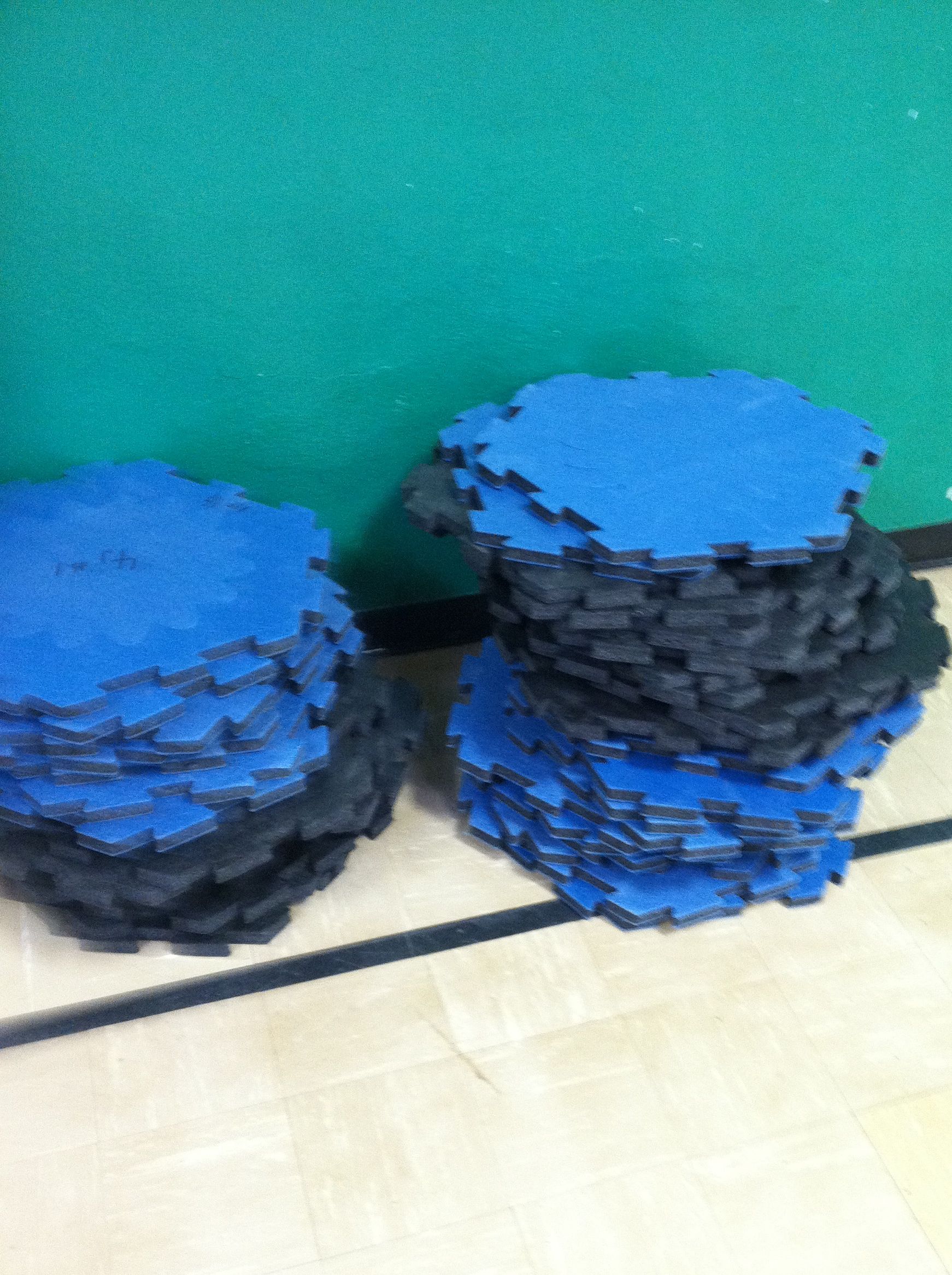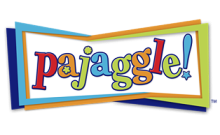Equipment and Setup:
- Twenty pins are lined up on the black lines in front of the opposing walls. It works best to pick a couple of students to begin setting up the targets while the rules are covered and the teams set.
- It works best to pick a couple of students to begin setting up the targets while the rules are covered and the teams set.
- Break class into two teams. In our gym we have four teams (red, blue, yellow, green). So it’s pretty easy to put two teams on each side.
- The dividing line in the middle of the gym cannot be crossed (unless going to the slammer)
- Each team has twenty pins that are defended by goalies on their team.
- The object of the game is to knock down all of the pins on the opposite end
- Each team starts with an equal number of soft foam balls.(between 10-15 works well) Players sit if front of their targets and wait for the music to start to begin the game.
Guidelines:
- Players may kick or throw the balls.
- The only way that a player is out is if their ball (kicked or thrown) is caught in the air by an opposing player.
- A player goes to the slammer (the area behind the pins on the opposite end of your team) when their ball is caught by someone on the opposing team.
- They get out of the slammer when they catch a ball thrown from a teammate. or they throw a ball from the slammer to a teammate.
- The games is over when all of the pins are knocked down. If there is time still left in the class, teams change ends and continue the game.
- The Most Fun Wins!



